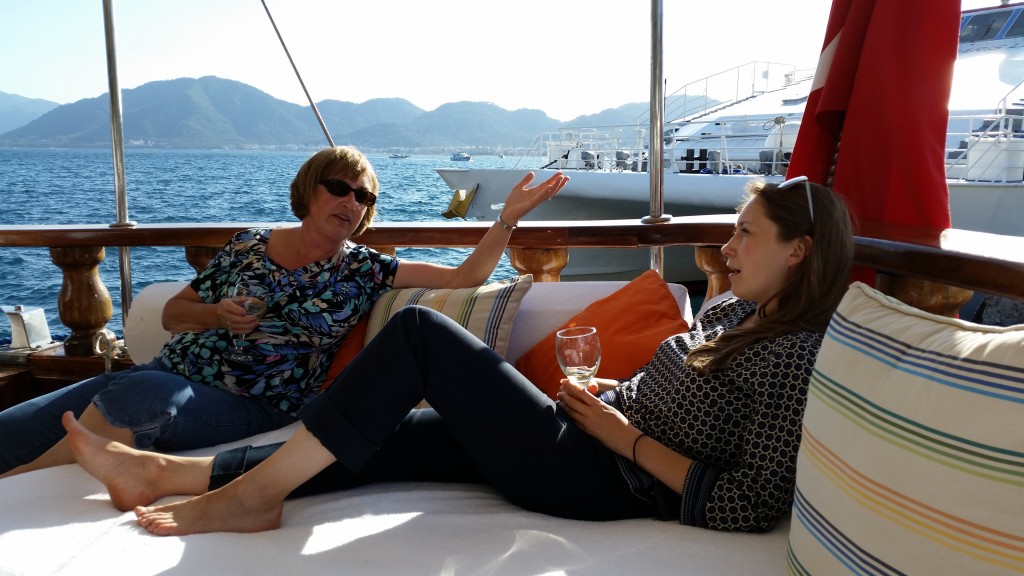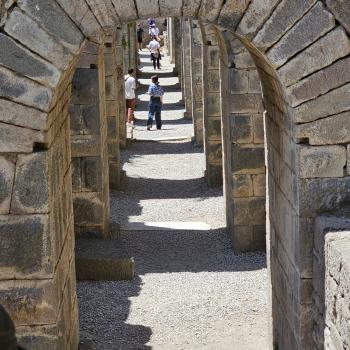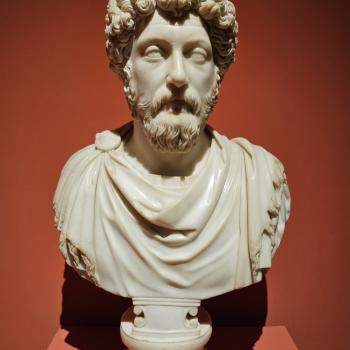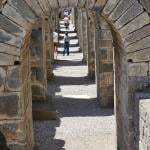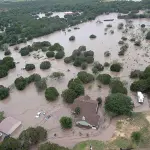Riding the boat is great fun in good weather, but we are not just wandering around, we are heading for Rhodes, a Greek island famous for its now long lost colossus. Here Ann and Yuliya are discussing what’s next while sailing to Rhodes..
Here’s a little Wiki summary about the Colossus, which once was one of the seven wonders of the ancient world….
“The Colossus of Rhodes was considered to be one of the Seven Wonders of the Ancient World. This giant bronze statue was documented as once standing at the harbour. It was completed in 280 BC and destroyed in an earthquake in 224 BC. No trace of the statue remains today.” It’s probably a myth that it straddled the harbor (it wasn’t that big, and our guide Maria says it was in town…), but it was large, and it may have looked something like this…
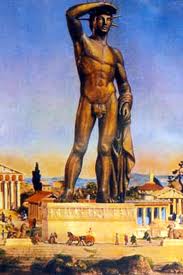
Here is our approach to the 49 mile long island, the longest of the chain of islands off the southwest coast of Turkey.
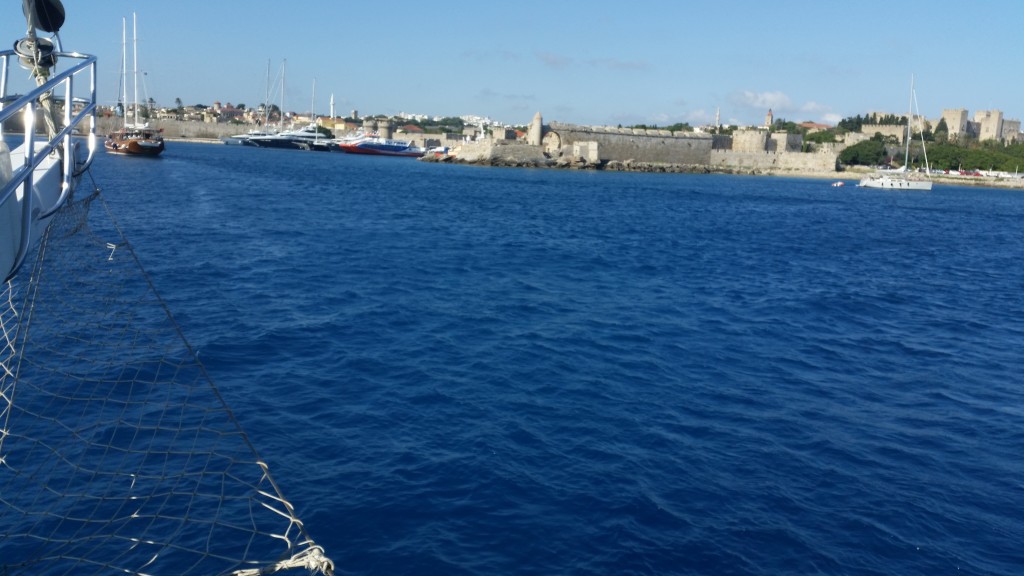
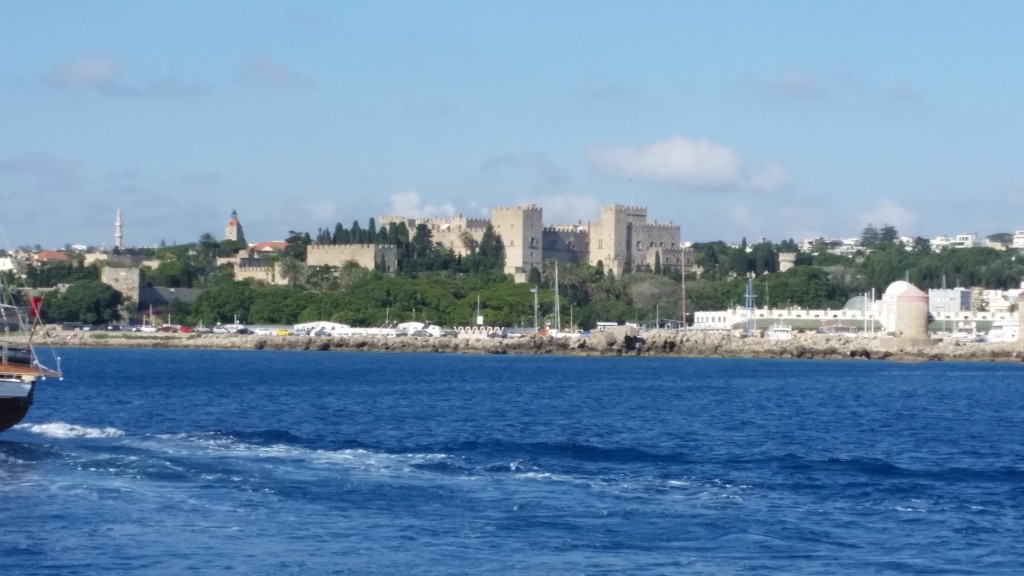
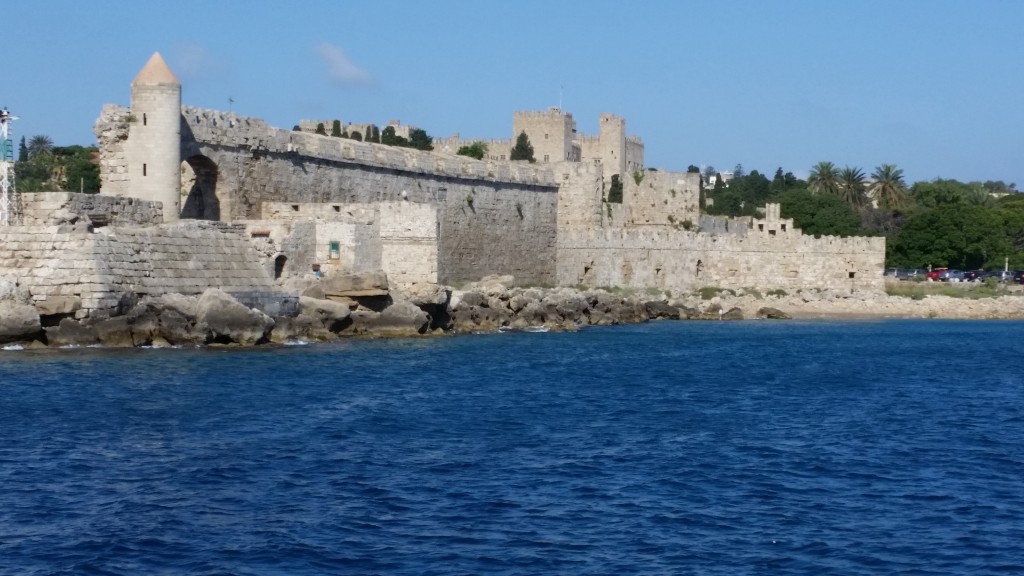
Here’s the entrance way to the old harbor, probably not the one that St. Paul will have used.
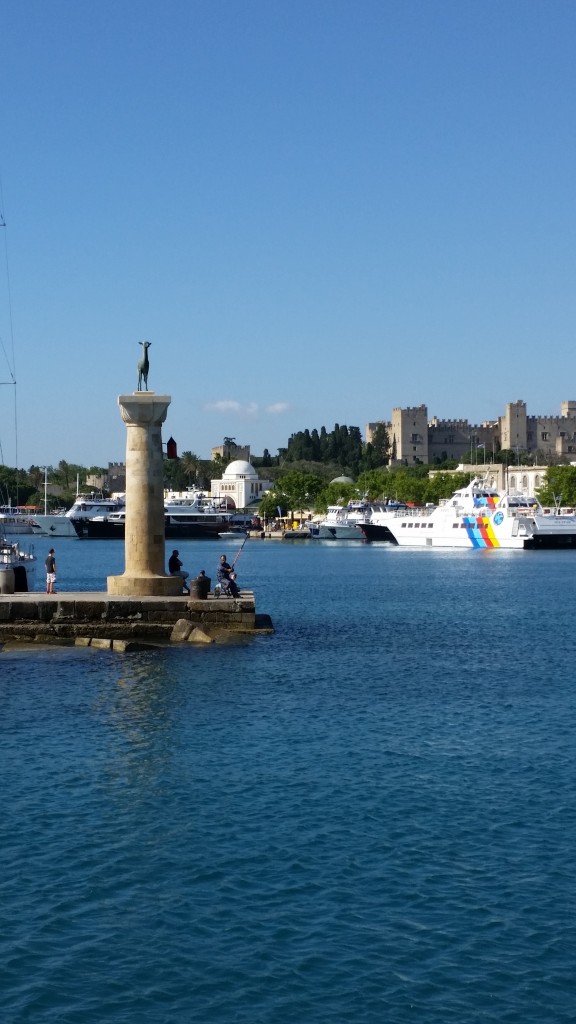
The stag or deer that you see at the entrance to the harbor is the symbol of the harbor, no doubt in part because of the large indigenous population of deer on the island (do not ask me how they got there). But there is an ancient temple as well of Artemis on this island, and Artemis/Diana has the deer as the animal associated with her.
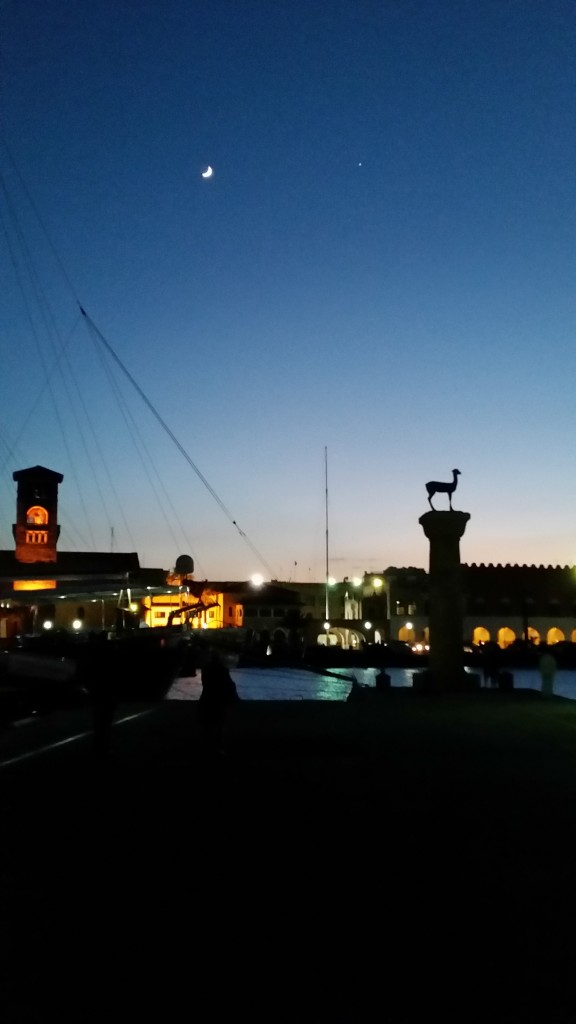
Rhodes is a beautiful island, whether by day or night, and it is no surprise it is the most popular holiday destination among all these islands. It’s large (49 miles long) has several cities (see a later post on Lindos), and there is much to see. But what you see in the old city of Rhodes is largely thanks to the Italians and other modern renovators. Yes there are fragmentary remains from the Greco-Roman and medieval and other periods, but most of what you see can be called modern refurbishings. It may look like an ancient medieval walled city, but that would not be entirely accurate. I will leave you to read about is rich and convoluted history on Wiki. The article they have on Rhodes is good. First I will show you around some of the walls and streets of Rhodes itself. The Knights of Rhodes including the St. John’s hospitlars are worth reading about. It was not just Paul who passed through here, so did the later crusaders and many pilgrims. One interesting disaster story— in the middle of the 19th century, lightning ignited a large gun powder magazine in the palace which blew up the palace and the nearby St. John’s Church. Turns out that gunpowder was being stored in both places (attn. crazy persons who think it is a good idea today to have guns in churches— this word just in. It is not. If you allow that, any church member who is ticked off or fifteen degrees shy of plumb in the attic can cause a disaster). The end result was 4,000 people were killed, and the old city only had about 10,000 residents at the time. They had to rebuilt everything right downtown.

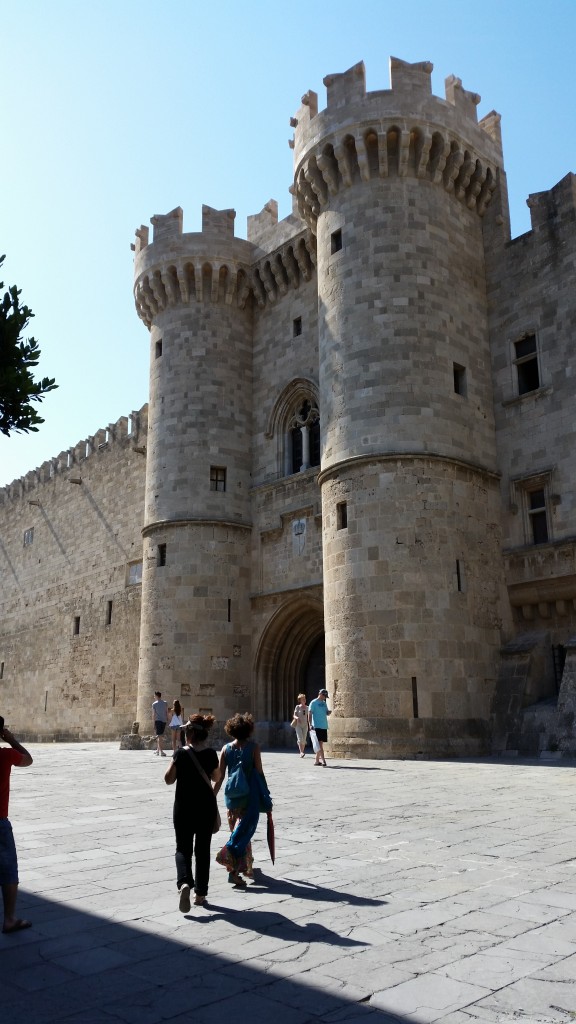
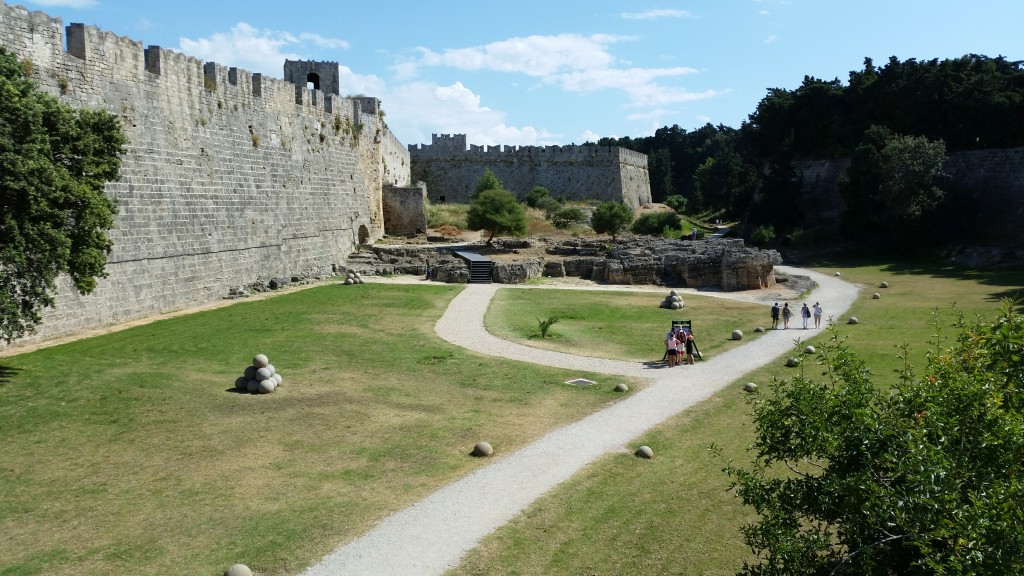
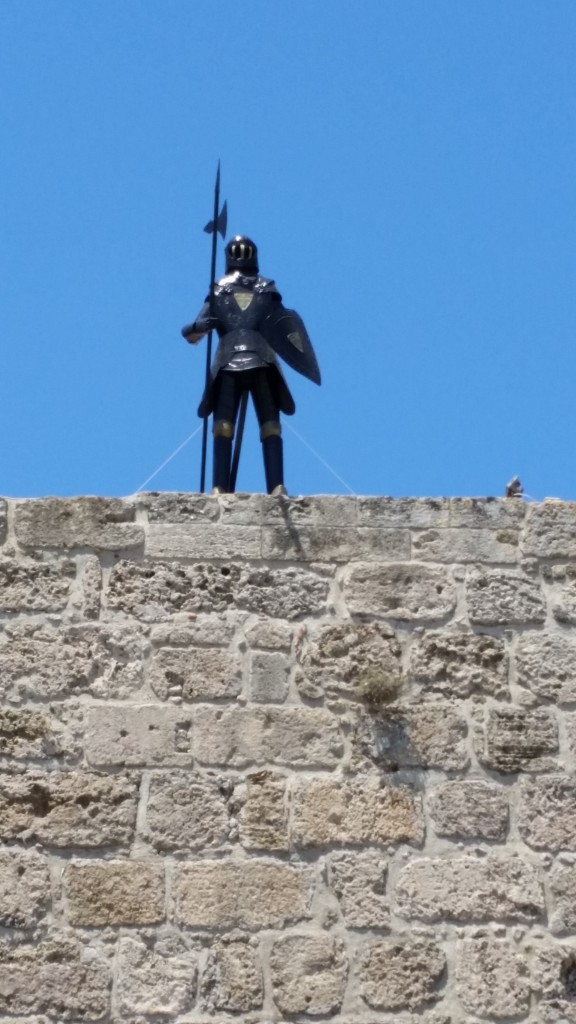
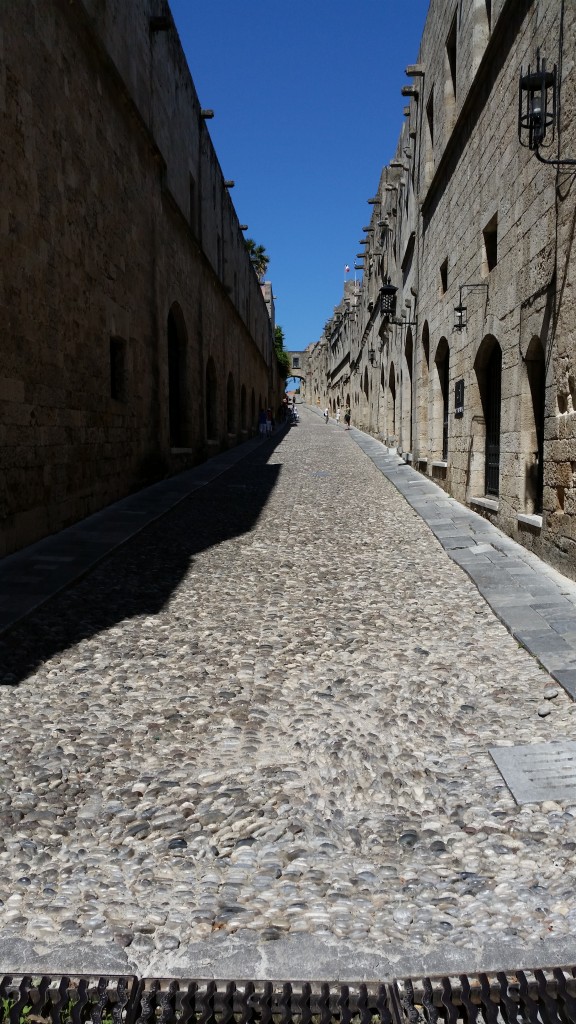

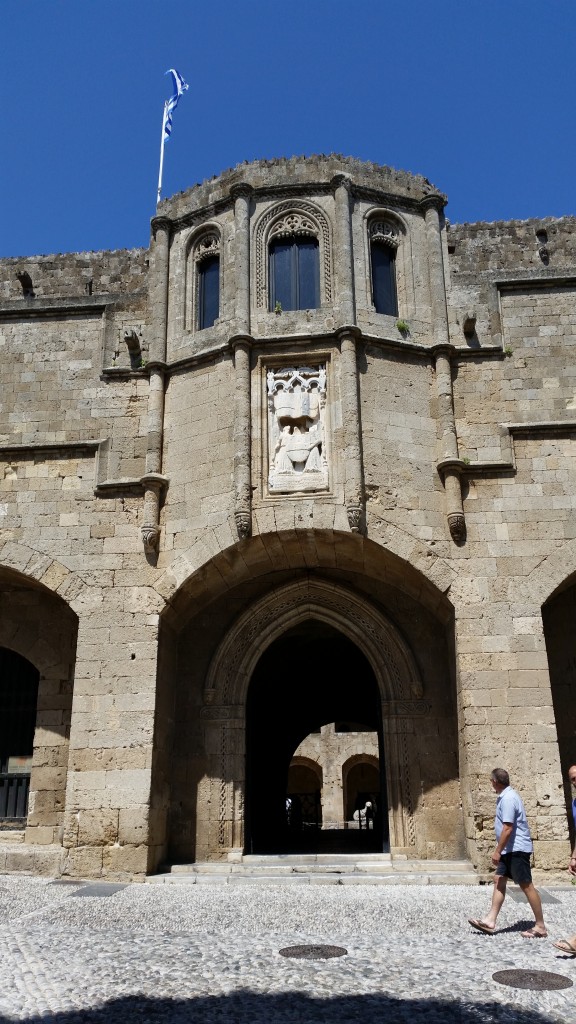
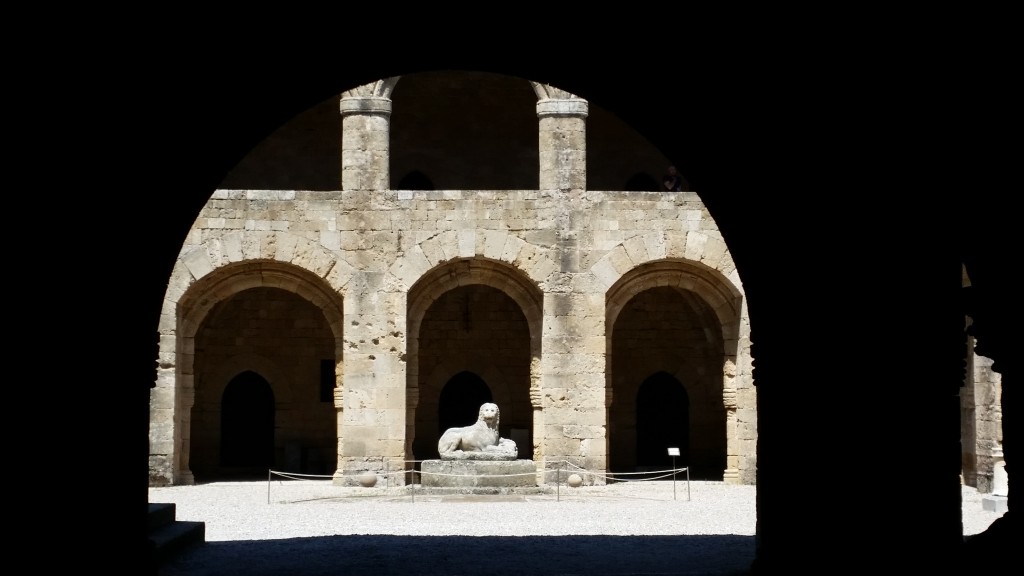
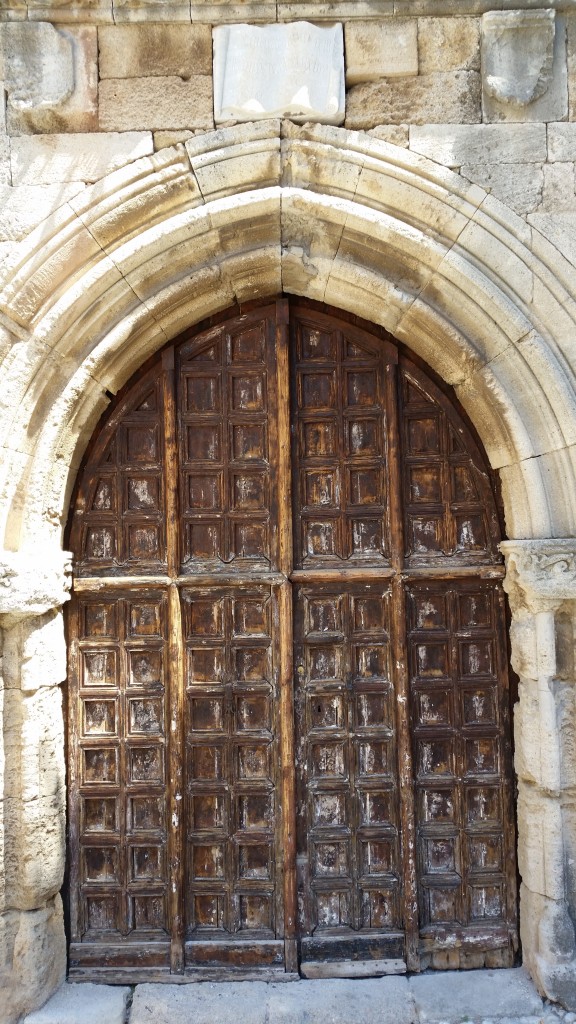
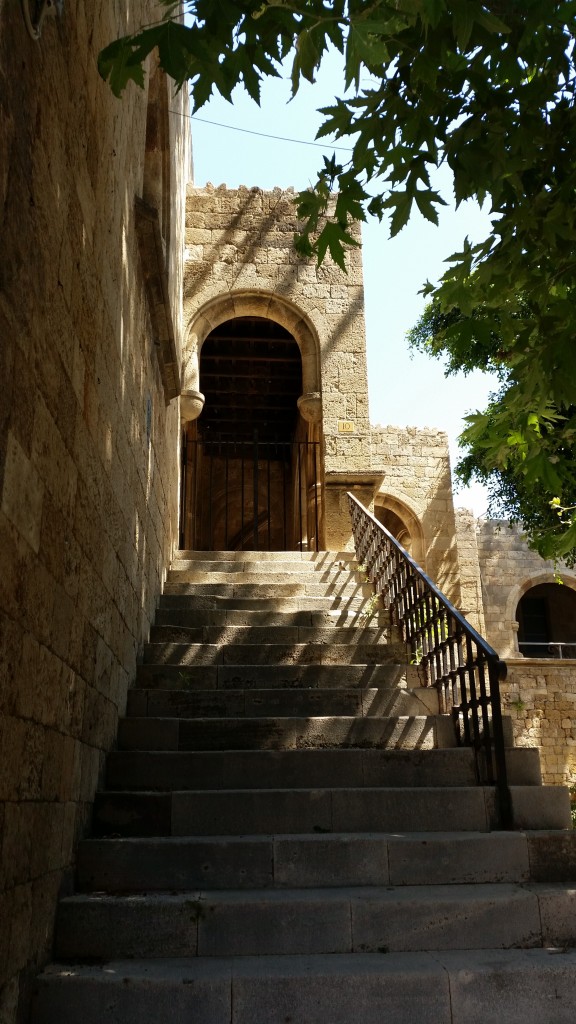
But there is so much more to Rhodes than walls and streets, and we will be exploring some of those in the next couple of posts.


